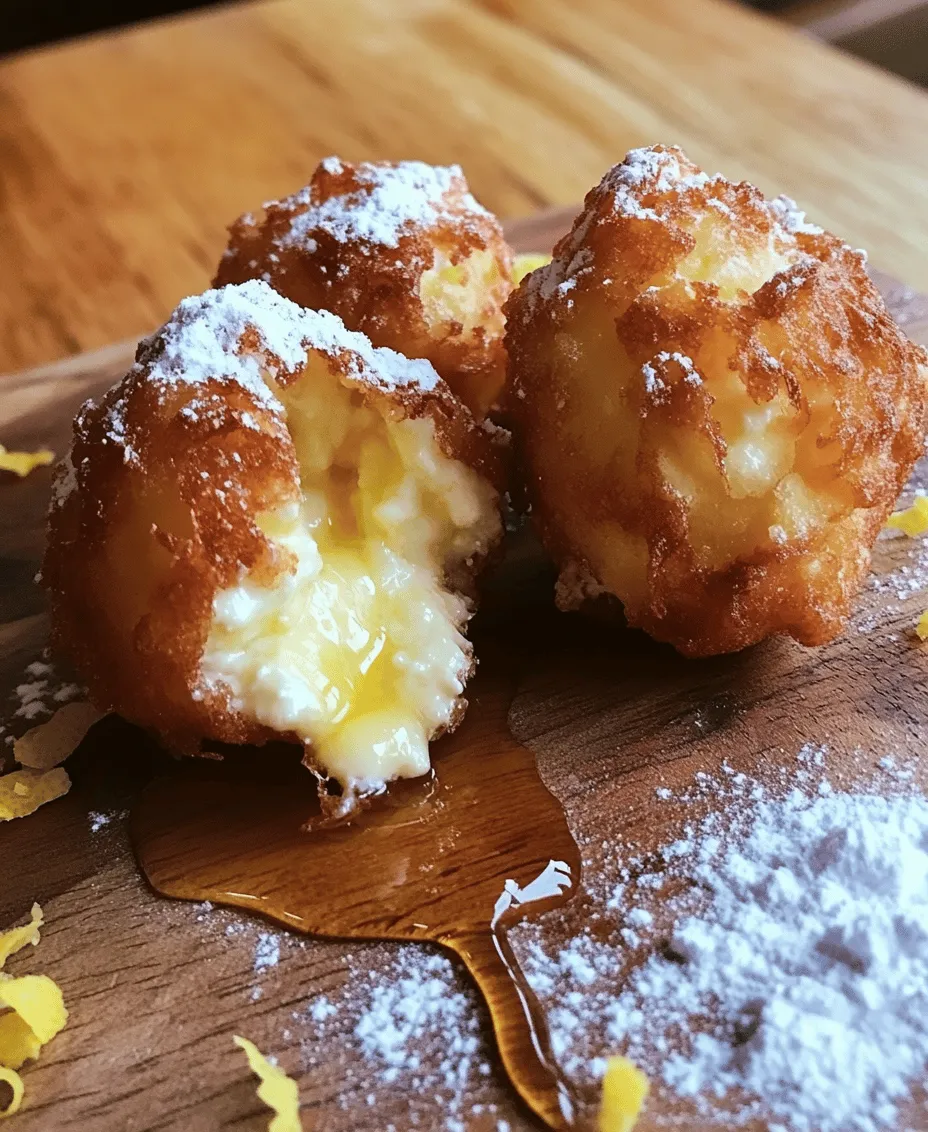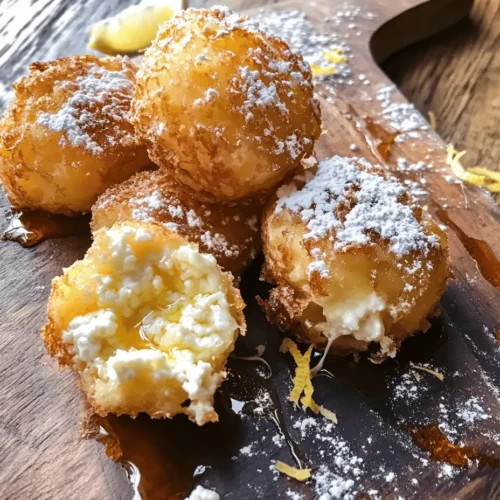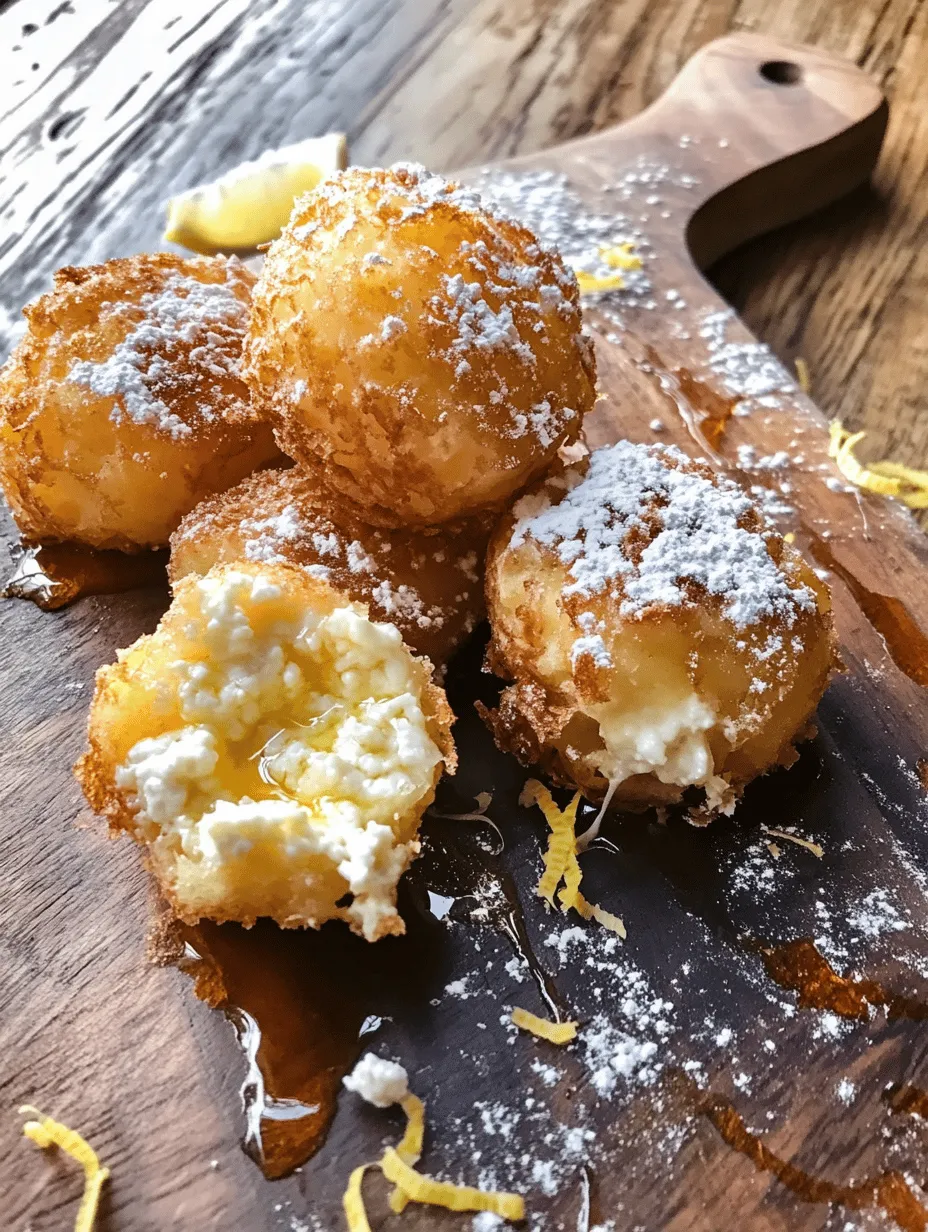Introduction
Jubniyeh, a delightful dessert hailing from the Middle East, particularly popular in Lebanese cuisine, is a sweet cheese fritter that has captured the hearts and taste buds of many. This dish not only showcases the rich culinary traditions of the region but also serves as a testament to the beautiful fusion of flavors and textures that characterize Middle Eastern desserts. The origins of Jubniyeh can be traced back to ancient times, where cheese was an integral part of local diets, transformed into various dishes that reflect the agricultural bounty of the area.
The fritters are known for their irresistible combination of crispy exterior and gooey, cheesy center, creating a texture that is both satisfying and indulgent. The balance of sweetness, derived from the sugar and the subtle tang of the cheeses, makes Jubniyeh an exceptional treat that can be enjoyed at any time of day. Whether served as a dessert after a hearty meal or as a sweet snack during gatherings, these cheese fritters are sure to impress with their unique flavor profile and delightful texture.
One of the most appealing aspects of Jubniyeh is its simplicity. Despite its gourmet-like taste, this recipe is accessible to home cooks of all skill levels. With just a handful of ingredients and straightforward instructions, anyone can whip up a batch of these delectable fritters in their own kitchen. This makes Jubniyeh not just a culinary experience, but also a joyous activity to share with family and friends, as you gather around to enjoy the delicious results together.
Understanding the Ingredients
To create the perfect Jubniyeh, it’s essential to understand the role each ingredient plays in achieving that signature flavor and texture. Let’s delve into the key components that make these sweet cheese fritters truly irresistible.
Fresh Mozzarella Cheese
Fresh mozzarella is the star ingredient of Jubniyeh, providing the main cheesy element that defines this dish. The quality of the mozzarella is paramount; it should be soft and moist, with a smooth texture that melts beautifully when cooked. Opting for high-quality, artisanal mozzarella can elevate the dish significantly, ensuring that each bite is rich and flavorful. Its mild taste allows the sweetness of the sugar and the other flavorings to shine through while still providing that delicious cheesy essence.
Ricotta Cheese
Ricotta cheese is another crucial component, contributing to the creamy texture that makes Jubniyeh so appealing. It adds a lightness to the fritters, making them pillowy and soft on the inside. The subtle flavor of ricotta complements the mozzarella perfectly, creating a harmonious blend that enhances the overall experience. When selecting ricotta, look for one that is fresh and has a smooth consistency, as this will help achieve the desired creaminess in the final product.
All-Purpose Flour
All-purpose flour serves as the binding agent in the Jubniyeh mixture. It plays a crucial role in creating the right fritter texture, ensuring that the cheese stays together while frying. The flour helps to absorb moisture, allowing the fritters to become crispy on the outside while remaining soft on the inside. It’s important to measure the flour accurately and mix it gently to avoid overworking the batter, which can lead to dense fritters.
Eggs
Eggs are essential in this recipe as they provide structure and stability to the fritters. They help to bind the ingredients together, creating a cohesive mixture that holds its shape during frying. Additionally, eggs contribute moisture and richness to the batter, enhancing the overall flavor. When incorporating eggs, make sure they are at room temperature for better integration into the mixture.
Granulated Sugar and Powdered Sugar
Both granulated sugar and powdered sugar play critical roles in the flavor profile of Jubniyeh. The granulated sugar is mixed into the batter, adding sweetness and balancing the savory notes of the cheese. In contrast, powdered sugar is often dusted on top of the fritters before serving, providing a delicate sweetness that enhances the presentation. This contrast not only elevates the taste but also adds an appealing visual element to the dish.
Lemon Zest and Vanilla Extract
To elevate the flavor of Jubniyeh, lemon zest and vanilla extract are added to the batter. Lemon zest introduces a bright, citrusy note that cuts through the richness of the cheese, providing balance and freshness. Vanilla extract adds depth and warmth, creating a delightful aroma that makes these fritters even more enticing. Together, these ingredients work to create a well-rounded flavor profile that is both unique and satisfying.
Baking Powder
Baking powder plays a vital role in creating the fluffiness of the fritters. It acts as a leavening agent, helping the batter to rise and expand while frying. This results in light and airy fritters that are not overly dense. Be sure to use fresh baking powder to ensure optimal results, as expired leavening agents will not produce the desired effect.
Vegetable Oil
Finally, vegetable oil is used for frying the Jubniyeh fritters. Choosing the right oil is crucial for achieving the perfect texture. High-smoke point oils like vegetable or canola oil are ideal, as they can withstand the heat required for frying without burning. It’s essential to heat the oil to the right temperature before adding the fritters; this ensures that they cook evenly and develop a beautiful golden-brown crust.
Step-by-Step Preparation
Now that we have a clear understanding of the ingredients, let’s move on to the step-by-step preparation of Jubniyeh. This section will guide you through the process of creating these delightful sweet cheese fritters, ensuring that you achieve the best results.
Preparing the Cheese Mixture
Start by combining the fresh mozzarella and ricotta cheeses in a mixing bowl. It is important to ensure that both cheeses are well-drained and at room temperature for optimal blending. Use a fork or a spatula to break down the mozzarella into smaller pieces, making it easier to mix with the ricotta. The goal is to create a cohesive cheese mixture that is smooth yet still retains some texture.
Once the cheeses are combined, you can move on to incorporating the wet ingredients.
Adding Wet Ingredients
In a separate bowl, whisk together the eggs and granulated sugar until well combined. This mixture should be light and frothy, indicating that air has been incorporated, which will help the fritters to rise during frying. Next, add the lemon zest and vanilla extract to the egg mixture, stirring until fully integrated.
Gradually pour the wet mixture into the cheese mixture, folding it in gently. It’s essential to mix carefully to preserve the fluffiness of the batter. The combination of the cheeses with the wet ingredients should create a creamy consistency, perfect for forming fritters.
Incorporating Dry Ingredients
Now it’s time to incorporate the dry ingredients. In a separate bowl, sift together the all-purpose flour and baking powder. This step is crucial as it helps to aerate the flour and ensure even distribution of the baking powder throughout the batter. Slowly add the dry mixture to the cheese and egg mixture, folding gently until just combined. Be careful not to overmix, as this can lead to tough fritters. The batter should be thick but still slightly pourable.
Frying the Jubniyeh Fritters
With the batter prepared, it’s time to fry the Jubniyeh fritters. Begin by heating the vegetable oil in a deep pan or a heavy-bottomed pot over medium heat. To test if the oil is hot enough, drop a small amount of the batter into the oil; it should sizzle and rise to the surface immediately. The ideal frying temperature is around 350°F (175°C), which will allow the fritters to cook through while developing a golden-brown exterior.
Once the oil is at the right temperature, use a spoon or small ice cream scoop to drop the batter into the hot oil, being careful not to overcrowd the pan. Fry the fritters in batches, turning them occasionally until they are golden brown on all sides. This process usually takes about 3-4 minutes per batch, but it’s essential to monitor the fritters closely to prevent burning.
As the Jubniyeh fritters cook, they will puff up slightly, creating that desirable fluffy texture. Once they are golden brown, remove them from the oil using a slotted spoon and place them on a paper towel-lined plate to drain excess oil.
By following these steps, you will be well on your way to creating delicious Jubniyeh fritters that will impress your friends and family. The combination of fresh cheeses, light batter, and careful frying techniques will ensure that your fritters are as delightful as those found in traditional Middle Eastern kitchens. Stay tuned for the final touches and serving suggestions to elevate your Jubniyeh experience to the next level!

Detailed Instructions for Perfectly Fried Jubniyeh
Achieving the ideal frying temperature is crucial for making perfect Jubniyeh, the irresistible sweet cheese fritters. Begin by selecting a deep frying pan or a heavy-bottomed pot for frying. Fill it with oil to a depth of about two inches. The type of oil you choose can also impact the flavor; vegetable or canola oil are excellent choices due to their high smoke point and neutral taste.
Achieving the Ideal Frying Temperature
Heat the oil over medium heat until it reaches 350°F (175°C). Using a kitchen thermometer can help maintain the correct temperature. If you don’t have a thermometer, you can test the oil’s readiness by dropping a small piece of dough into the oil. If it sizzles and rises to the surface within a few seconds, the oil is ready for frying.
Forming the Fritters
Once your oil is heated, it’s time to shape the Jubniyeh. Begin with your prepared cheese fritter batter. Use a spoon or a small ice cream scoop to portion out the batter. The size of each fritter can vary based on your preference, but bite-sized pieces that are about one to two inches in diameter are ideal for even frying and easy eating.
Before shaping each fritter, dust your hands and the work surface with flour. This step is essential to prevent the batter from sticking to your hands and ensures a smooth shaping process. Take a portion of the batter, roll it gently between your palms, and flatten it slightly to form a disk.
Frying the Fritters
Once all your fritters are shaped, carefully place them in the hot oil, ensuring you do not overcrowd the pan. Fry them in batches if necessary, leaving enough space for the fritters to float and cook evenly.
Timing and Visual Cues: Fry each fritter for about 3-4 minutes on each side, or until they turn a beautiful golden brown. You’ll know they are perfectly fried when they are golden all over, and the exterior is crisp while the inside remains soft and gooey from the melted cheese.
Draining Excess Oil: To maintain the fritters’ ideal texture, use a slotted spoon to remove them from the oil. Place them on a plate lined with paper towels to drain any excess oil. This step is crucial as it helps to keep the fritters light and prevents them from becoming greasy.
Serving Suggestions
Jubniyeh can be a delightful treat on its own, but there are several ways to elevate its presentation and flavor. For a classic touch, dust the warm fritters with powdered sugar. This adds a touch of sweetness that complements the savory cheese. If you want to take it a step further, consider drizzling a bit of honey over the top. The combination of powdered sugar and honey creates a delicious glaze that enhances the fritters’ appeal.
Pairing Suggestions: Jubniyeh pairs beautifully with a variety of beverages. Serve them with a steaming cup of Arabic coffee or mint tea for a delightful afternoon snack. Alternatively, they can be enjoyed alongside vanilla ice cream or fresh fruit for a decadent dessert experience.
Cultural Context and Historical Significance
Jubniyeh has its roots deeply embedded in Middle Eastern cuisine, where cheese plays a significant role in a variety of dishes. These fritters are often served during celebrations, holidays, and family gatherings, symbolizing joy and togetherness. In many regions, cheese fritters like Jubniyeh are crafted with unique variations. For instance, in some areas, spices like cinnamon or cardamom are added to the batter, infusing the fritters with warm, aromatic flavors that are perfect for festive occasions.
The cultural significance of Jubniyeh extends beyond its taste; it represents the art of cooking passed down through generations. Families gather to prepare this dish together, creating cherished memories alongside the delicious results.
Health Considerations
While Jubniyeh is undeniably delicious, it is essential to consider nutritional insights. These fritters are rich in flavor, primarily due to the cheese, which contributes to their creamy texture and taste. However, moderation is key. Enjoying Jubniyeh occasionally as a treat can be part of a balanced diet.
If you’re looking to make healthier choices, consider some substitutions. For example, you can use low-fat cheese varieties or gluten-free flour in the batter to accommodate dietary restrictions. These modifications can help reduce calories and fat content while still allowing you to enjoy the delightful flavor of Jubniyeh.
Conclusion
In summary, Jubniyeh is a sweet treat that combines unique flavors and textures, capturing the essence of Middle Eastern culinary traditions. The crispy exterior paired with the gooey cheese center makes for an irresistible combination that is sure to please everyone. Making Jubniyeh at home provides not just a delicious dessert experience, but also a celebration of its rich culinary roots.
So why not bring a taste of the Middle East into your kitchen? Try making Jubniyeh for yourself and experience the joy of this delightful dish. Whether served at a family gathering or enjoyed as a personal treat, Jubniyeh is sure to leave a lasting impression. Celebrate its versatility and share the love of cooking with friends and family as you savor each delicious bite.



